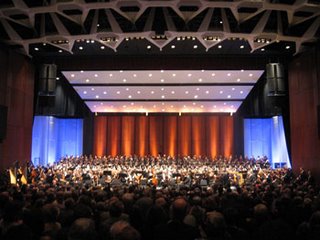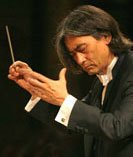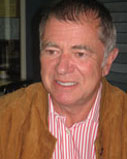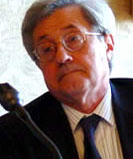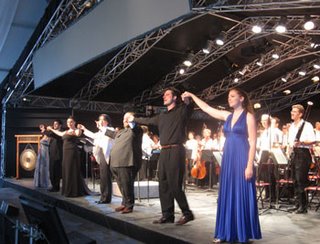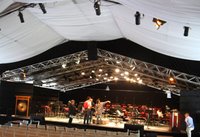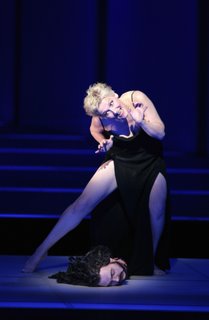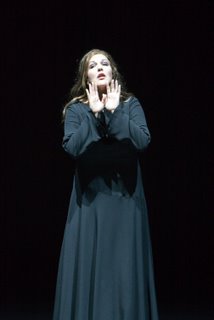OSM’s 75th with Mehta & Messiaen a Celebration of Sound!
Montreal Symphony and Zubin Mehta Grew Together in the 60s
In 1961, at the very beginning of his career, the OSM took a chance on 25-year-old Zubin Mehta and hired him as music director. For the next six years, he and the orchestra learned repertoire together, but within a year of his OSM appointment, Mehta also became music director of the Los Angeles Philharmonic (1962-77). His career quickly became international. In 1977, he became music director of the Israel Philharmonic, and then the New York Philharmonic (1978-91), and later, the Bavarian State Opera (1998-2006) in Munich. He is a regular guest conductor of the Vienna Philharmonic and has been invited by its members to conduct no fewer than four of its famous New Year’s concerts.
For his return visit to Montreal to celebrate the OSM’s 75th, Mehta put together a programme of works by Messiaen and Saint-Saens to be presented in the Notre Dame Basilica in Old Montreal. Et exspecto resurrectionem mortuorum (Messiaen) was part of “Automne Messiaen 2008” being celebrated all over Montreal from September to December and culminating in performances of Messiaen’s opera Saint Francis of Assisi conducted by Kent Nagano. In fact, 2008 is the centenary of Messiaen’s birth: the actual date is December 10.
Mehta on Messiaen: “I really miss him!”
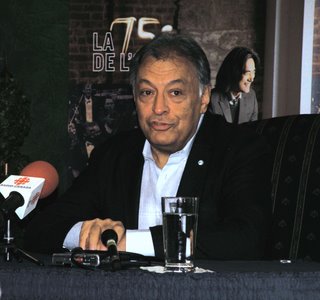 I had not realized that Mehta has been a great champion of Messiaen’s music over the years. At his press conference held a few days before the Montreal concert, Mehta talked about his relationship with Messiaen and his music, and passed on an amusing anecdote. It seems that Messiaen was in Tel Aviv for rehearsals of his Turangalila Symphony with the Israel Philharmonic. During the course of rehearsals the players became bored and restless and at one of the breaks some of them went to Messiaen and asked him to cut a couple of movements. Naturally, Messiaen was offended and made a counter-suggestion. Better they should cut the other work on the programme – Mozart’s Jupiter Symphony – and he would tell them exactly where to make the cuts! Mehta had to apologize to Messiaen over the incident. No word on whether anyone apologized to Mozart.
I had not realized that Mehta has been a great champion of Messiaen’s music over the years. At his press conference held a few days before the Montreal concert, Mehta talked about his relationship with Messiaen and his music, and passed on an amusing anecdote. It seems that Messiaen was in Tel Aviv for rehearsals of his Turangalila Symphony with the Israel Philharmonic. During the course of rehearsals the players became bored and restless and at one of the breaks some of them went to Messiaen and asked him to cut a couple of movements. Naturally, Messiaen was offended and made a counter-suggestion. Better they should cut the other work on the programme – Mozart’s Jupiter Symphony – and he would tell them exactly where to make the cuts! Mehta had to apologize to Messiaen over the incident. No word on whether anyone apologized to Mozart.
Mehta recalled that Messiaen often came to rehearsals wearing a colourful Hawaiian shirt with girls in hula skirts on it, but when it came to the performance of his music he was very serious and very strict.
Wind, Brass & Percussion Orchestration – When “Bigger” is “Better”
Mehta conducted the Messiaen with his customary efficiency. Messiaen pupil Pierre Boulez could hardly have done better. Nor was Et exspecto resurrectionem mortuorum the only Messiaen heard during the evening. The concert began with a performance of the early (1932) organ piece Apparition de l’Église éternelle played by Pierre Grandmaison. This ten-minute work begins with a series of unsettling tone clusters, but gradually out of extreme dissonance comes relief in the form of the grandest and loudest major chords one is ever likely to hear from an organ. Presumably, this is the “apparition” of the title.
Saint-Saens’ Organ Symphony Pure Sound, Beautifully Balanced
Mehta has had a lot of experience with the Organ Symphony. He has recorded it several times, most recently with the Berlin Philharmonic in 1997, and his view of the piece has become more refined over the years. Saint-Saens saves all the bombast for the last movement – this is the only time in the piece that the organ is allowed to play fortissimo – and Mehta made sure that the really big guns were saved until the end. In fact, the only other section of the score where the organ plays is the second movement ‘Poco Adagio,’ and there it mostly meshes softly with the orchestra in an accompanying role.
In both the Messiaen and the Saint-Saens, we saw a master conductor at work. Mehta is a consummate technician, but he also loves the music he plays. It was a treat to see him at work and to hear this music so well performed.
Mehta Discography, Autobiography, and a Well Deserved Award
For listeners who wish to hear more of Mehta, there is a huge catalogue of recordings and DVDs and it continues to expand with new releases almost every month. Among his recent releases are the VPO New Year’s Concert 2007 from DG on both CD and DVD; the Israel Philharmonic’s 70th Anniversary Concert from 2007 released by Euroarts on DVD; and of special interest to those who want to see how he does it, there is a DVD called Zubin Mehta in Rehearsal from Image Entertainment. We see Mehta rehearsing Richard Strauss’ Till Eulenspiegel with the Israel Philharmonic, followed by a complete performance. Also scheduled for release on September 30 by Medici Masters is a 1977 concert with Mehta and the Los Angeles Philharmonic under the title Zubin Mehta: Los Angeles Philharmonic.
For more information about Zubin Mehta, his life, recordings and upcoming performances visit his website at www.zubinmehta.net.
It was announced this week that Mehta has been awarded the prestigious Praemium Imperiale by the Japan Arts Foundation. The prize is given for lifetime achievement and is worth US$143,000. It will be officially presented in a special ceremony in Tokyo on October 15.
Finally, Mehta has recently written his autobiography. It is available now in German (Partitur meines Leben), Italian, and Hebrew, and the English version will be released by Amadeus Press November 15 with the title Zubin Mehta: a Memoir.
Paul E. Robinson is the author of Herbert von Karajan: the Maestro as Superstar and Sir Georg Solti: his Life and Music, both available at http://www.amazon.com/. For more about Paul E. Robinson please visit his website at http://www.theartoftheconductor.com/.
Labels: 75th, conductors, Messiaen, Nagano, OSM, Zubin Mehta
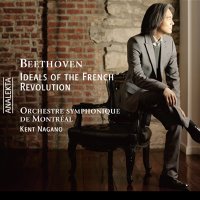 The General: for orchestra with soprano, choir and narrator. Music by Beethoven: Symphony #5 in C minor Op.67; Egmont Op.84; Incidental Music (exerpts); Opferlied Op.121b
The General: for orchestra with soprano, choir and narrator. Music by Beethoven: Symphony #5 in C minor Op.67; Egmont Op.84; Incidental Music (exerpts); Opferlied Op.121b
